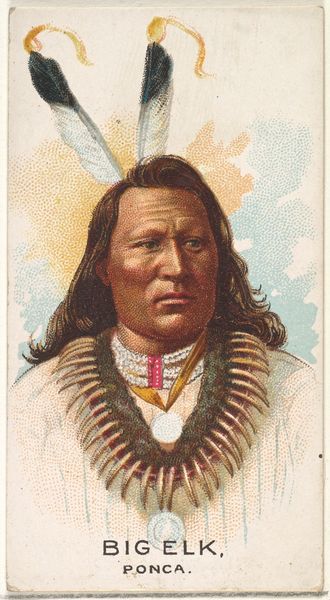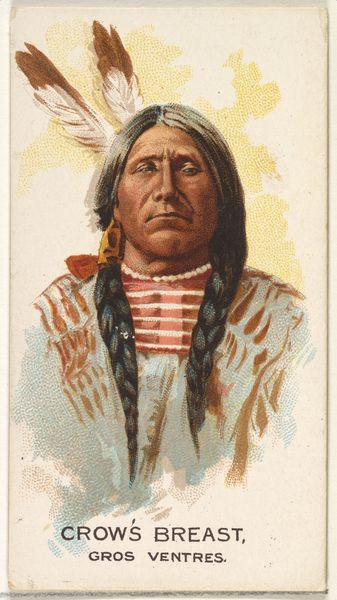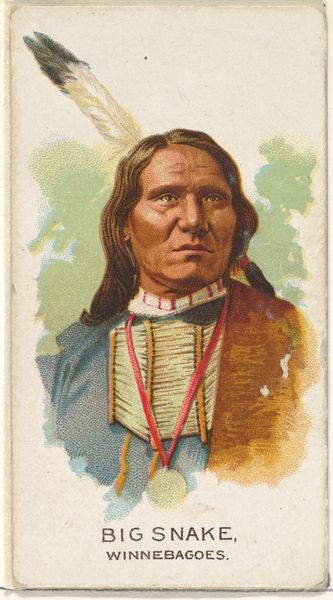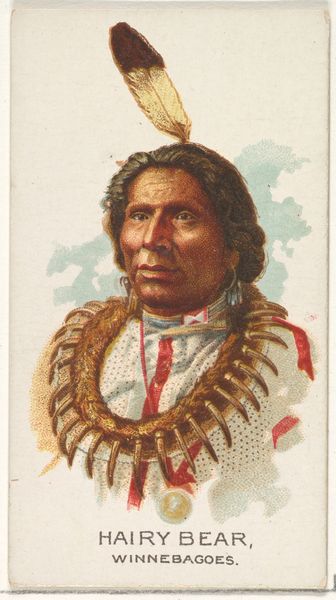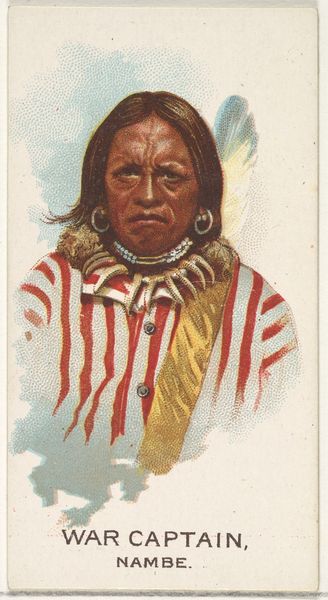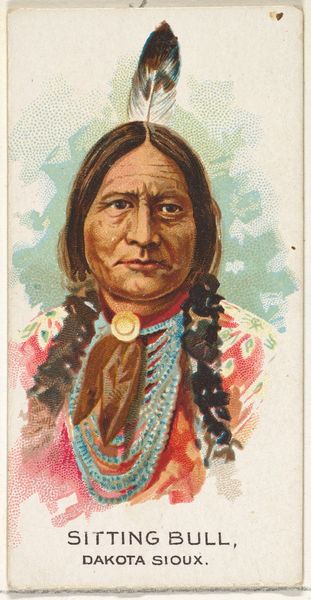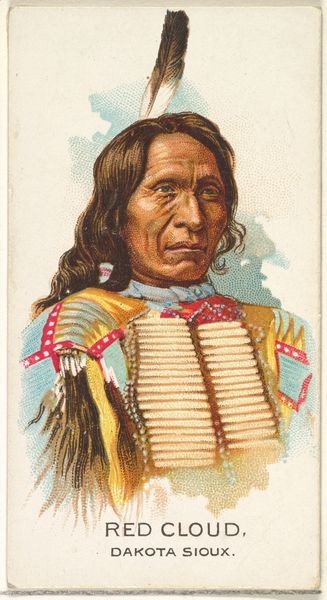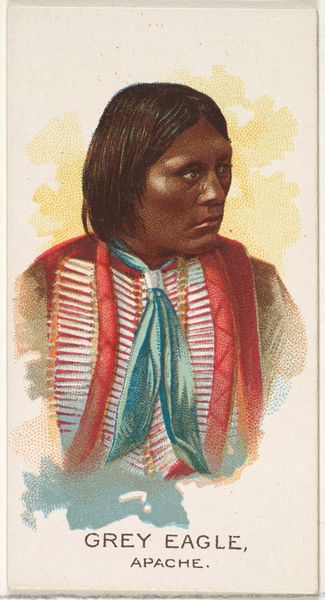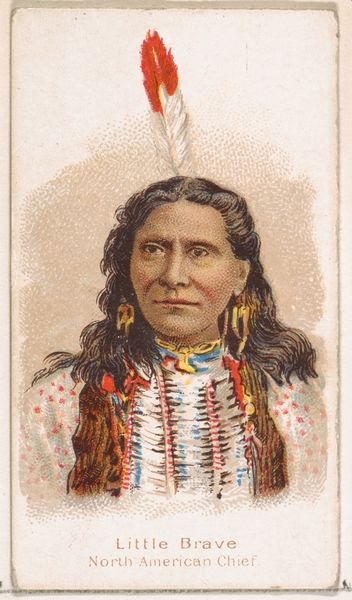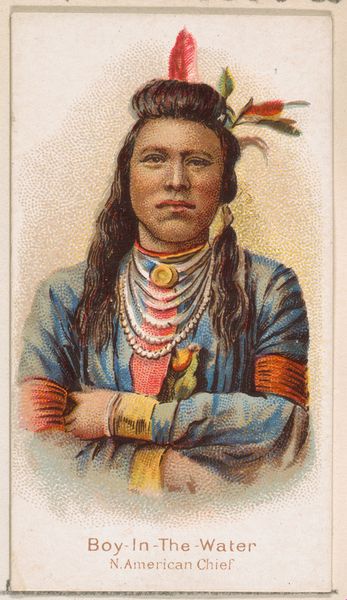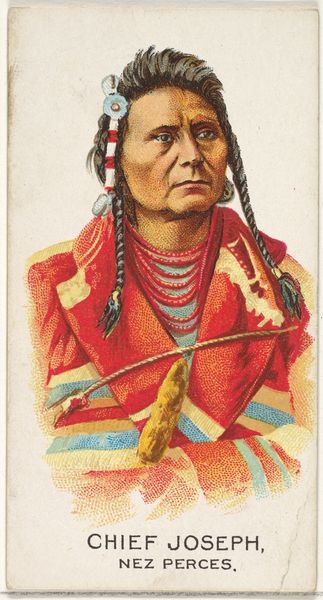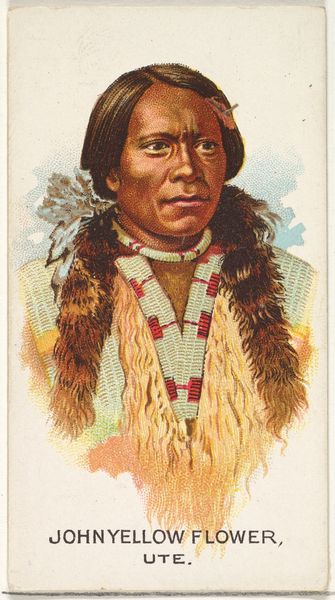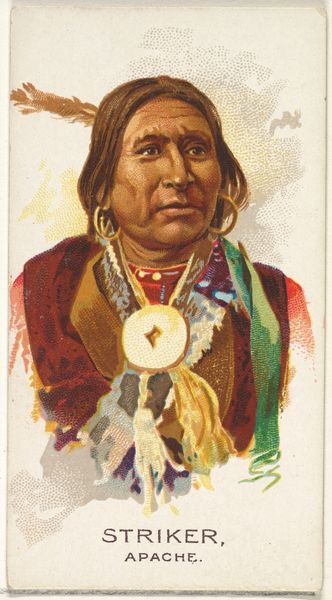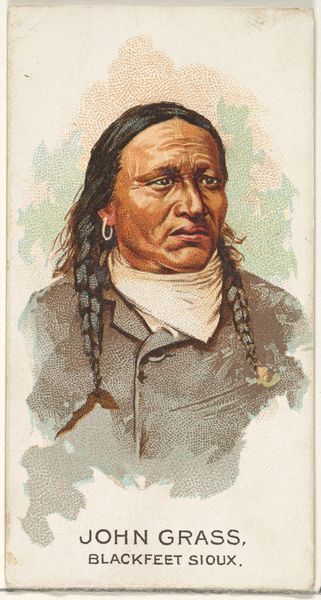
White Shield, Southern Cheyenne, from the American Indian Chiefs series (N2) for Allen & Ginter Cigarettes Brands 1888
0:00
0:00
drawing, print
#
portrait
#
drawing
#
16_19th-century
# print
#
caricature
#
orientalism
#
watercolor
Dimensions: Sheet: 2 3/4 x 1 1/2 in. (7 x 3.8 cm)
Copyright: Public Domain
Curator: Immediately, the textures are what capture my attention. The pointillist rendering lends a kind of dreamy softness to this depiction of White Shield. Editor: And what a curious item for a museum collection! What can you tell us about this... trading card? Curator: Yes, it's one of a series called "American Indian Chiefs," from a set of cards created for Allen & Ginter Cigarettes in 1888. The full title reads: White Shield, Southern Cheyenne, from the American Indian Chiefs series. The rendering here uses a combination of watercolor and printmaking. Editor: It’s fascinating how such a seemingly simple portrait speaks to broader power dynamics. These cards, distributed with cigarettes, popularized and perhaps exoticized images of Indigenous leaders like White Shield. The romantic, almost Orientalist touches—notice the soft, muted colors and careful draping of fabric—serve to frame him within a specific, consumable narrative. Curator: Yes, there is certainly a subtle drama in the arrangement of the subject. The juxtaposition of traditional attire like the scarf with the superimposed large cross motif speaks volumes about imposed cultural narratives. Observe the light and shadow across his face; it directs the gaze downward to this... appropriation of faith, if I dare to say. Editor: Precisely. And consider the cigarette company itself. These cards weren't just innocent collectibles; they were tools for reinforcing the idea of Manifest Destiny through visual rhetoric. Curator: The semiotics of representation here are really interesting, where the subject, White Shield, becomes a signifier of a generalized notion of the "Indian," shaped by colonial interests. Editor: It serves as a potent reminder of how image culture participated in historical narratives. Even an image as small as a cigarette card can hold such complex layers of meaning. Curator: Agreed. Looking at the artwork from this vantage point, allows a richer understanding of visual rhetoric in this historical moment. Editor: Indeed, it gives us cause to reconsider the nature of commercial portraiture and its political impacts.
Comments
No comments
Be the first to comment and join the conversation on the ultimate creative platform.
